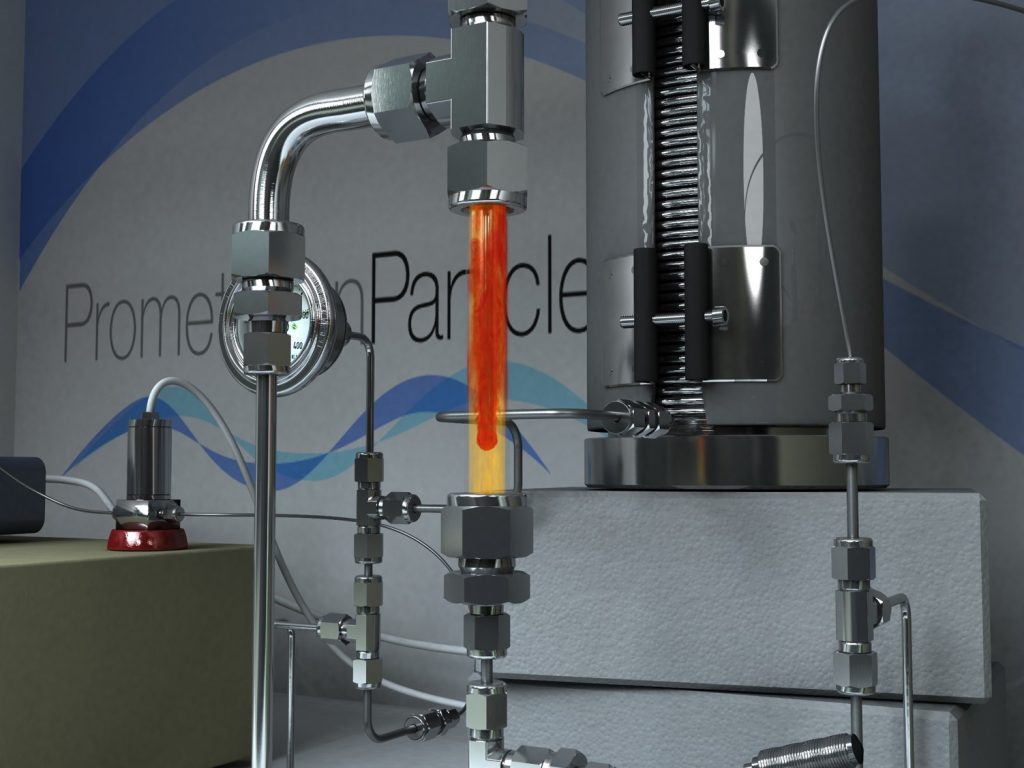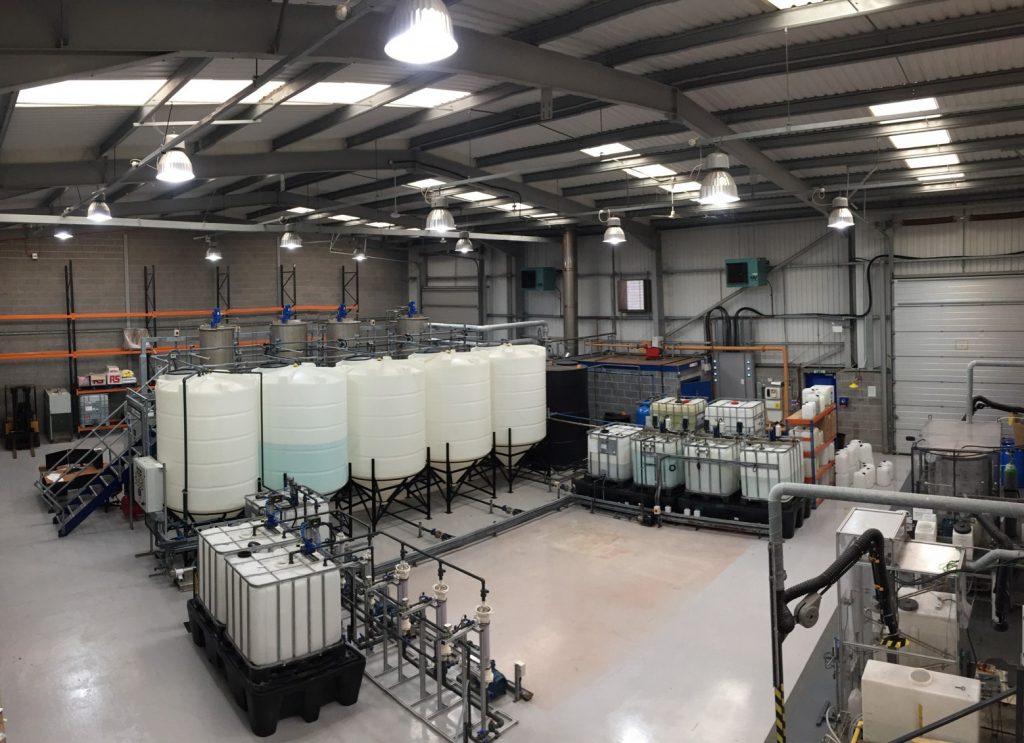
August 7, 2020, by Jo Gregory
Reopening laboratories: sharing best practice
The nationwide lockdown due to the spread of COVID-19 saw an impressive response from the chemicals industry and research community, both from companies that continued through lockdown and had to quickly adapt their working practices as well as organisations and universities like the University of Nottingham who rapidly closed laboratories for all but essential research. Researchers were suddenly adapting to working from home and communicating with their team in a virtual environment. But it’s arguable that an even bigger challenge has come in planning towards the reopening of laboratories with the many new restrictions and guidelines in place.
Our recent webinar on this topic as part of the Sustainable Chemicals Industry Forum was an opportunity to hear from representatives across the chemicals industry who reflected on the experiences of reopening and operating chemistry facilities within the current Government guidelines. They also shared the approaches and learnings that have come out of this work.
We were delighted to be joined by Dr Selina Ambrose, Technical Manager at Promethean Particles. The company was established in 2007 based on the research of Professor Ed Lester (Chemical Engineering, University of Nottingham) . Selina oversees all of the technical work on nanomaterial development and scale-up; including their research and development projects as well as new product development. She shared the following insights with us.
How did Promethean Particles respond to lockdown?
After the Government announcement about lockdown, we decided to close our site on Tuesday 24th March and, where possible, staff began working from home. All production, orders and experimental aspects of our R&D projects were put on hold and our customers were informed of the status. From the 1st of April, a portion of our staff who were unable to work from home were placed on furlough.
As the Government announced in mid-May that some restrictions were easing and that some businesses could re-open (e.g. manufacturing) we planned out how we could re-open safely. I worked with our Technical Director to map out the measures and procedures we needed to put in place to do this while following Government guidelines and completing our own risk assessments. Staff were consulted during this process to ensure everyone was happy and comfortable with the measures being proposed. After all our plans were put in motion, we successfully re-opened our site on the 26th May and resumed our operations.

What approaches your organisation has taken to ensure social distanced working particularly in chemistry labs/operations facilities?
As a small company, we have a relatively small headcount (11) and our site is quite large (3 industrial units merged together), so we’re fortunate that we have quite a lot of physical space in the first instance. However, to ensure social distancing, we decided to split the on-site team into two shifts; the first working 6:30-12:30 and the second 13:00-19:00. The 30 minutes in between allows a ‘handover’ between shift leaders while minimising contact between the majority of the teams. The two groups alternate shift times each week (e.g. Group 1 would start at 6:30 on one week, then be on the afternoon shift on the following week) so that it is fair to everyone.
While deciding the way the team would be split, considerations needed to be made to ensure a trained first aider is present on-site at all times, as well as ensuring there is a balance of senior/junior staff. Where deliveries or operations would require a forklift, we also had to make sure this is planned so that the trained staff would be on hand to prevent any delays.
Our office spaces were the main area where re-configuration was required so this involved moving some staff into other office space, such as the meeting room which wouldn’t be used for on-site meetings anyway as we’ve moved to online meetings (Teams, Zoom etc.). Of course, where staff could work from home, this was implemented to further minimise the number of people in the building at any one time.
What were the biggest challenges and how did you overcome them?
Not a huge challenge but it was important to make sure each individual staff member was happy and comfortable returning to work. Everybody’s personal situation is different, whether that’s their own health (physical and mental), the health of members of their household, or whether their commute to work would put them at risk.
We needed to consider if our staff are, or live with anyone, considered ‘vulnerable’ or ‘extremely vulnerable’; and whether they need to rely on public transport to get to work. These personal issues may not be something an individual would be comfortable speaking up about in a group meeting with all staff. So, to overcome this, I (as the Technical Manager) had individual phone calls or meetings via Teams to talk to staff about their personal situations, help them feel comfortable about returning to work, and to give them an opportunity to raise any concerns one-to-one.
Another ‘challenge’ was making sure we were implementing practical, workable solutions and not just putting measures or protocols in place ‘to be seen to be doing the right thing’. For example, we thought about bringing in our external cleaning contractors more regularly, every day or several times a week. However, in practice, this would mean more people physically in the building so social distancing becomes more difficult. In addition, our cleaning company sends different cleaners each time; if this was the case in this scenario, it would increase the risk through contact between more different people – something we’re actively trying to avoid. As such, we kept our cleaning rota as before, once a week, and asked the cleaning company to make sure the same person came every week. Our shift leaders would instead clean down high-touch areas (e.g. door handles) at the start and end of their shifts with disinfectant. Furthermore, as members of staff, they would know which areas are used most often better than our external cleaner.

Have there been any adjustments since opening or unexpected problems?
No, I’m really pleased to say that everything has been running smoothly. Our staff have been brilliant in adapting to the new measures and procedures put in place, and are glad to be back at work (it sounds like the novelty of being at home on furlough wore off quite quickly!) It has been strange to not have the usual social aspect of our team, either doing a pub quiz together after work or even eating lunch together, but I think everybody recognises that we need to do this in the short term to get through this quickly and return to normal.
Every week, I’ve been checking in with staff to see if their situation has changed (home life or commute) or if there are any issues with the way we’re working, but no issues so far.
What are your key learnings? Is there anything that has changed for the better?
Video calls (Teams and Zoom) are well used now! While having customers and visitors on-site can definitely have its benefits because we can give them a tour of our facilities, which helps them to better understand our technology and capabilities, we may think twice about whether face-to-face meetings are really necessary or if it’s more efficient, effective, and better for the environment, to have a video call instead. We have customers in the US, Europe or in Asia (Japan/South Korea) where previously, we would mostly communicate via email and phone calls. The pandemic has made us use video conferencing platforms so much more and it has actually enhanced our customer relationships (better to see someone over video than just emailing). I think that’s something that has changed for the better and will continue.
If you would like to find out more about Promethean Particles you can contact them at info@proparticles.co.uk or follow them on Twitter at @ProParticles
The Sustainable Chemicals Industry Forum was set up with the aim of assisting companies in developing and implementing more sustainable chemical processes and products. For more information please contact Nick Bennett Nicholas.Bennett@nottingham.ac.uk
To find out more about the Green Chemicals Beacon and how our team of researchers are working to secure the low-carbon economy of the future, please visit the website or follow us on Twitter @UoN_GCB
No comments yet, fill out a comment to be the first

Leave a Reply